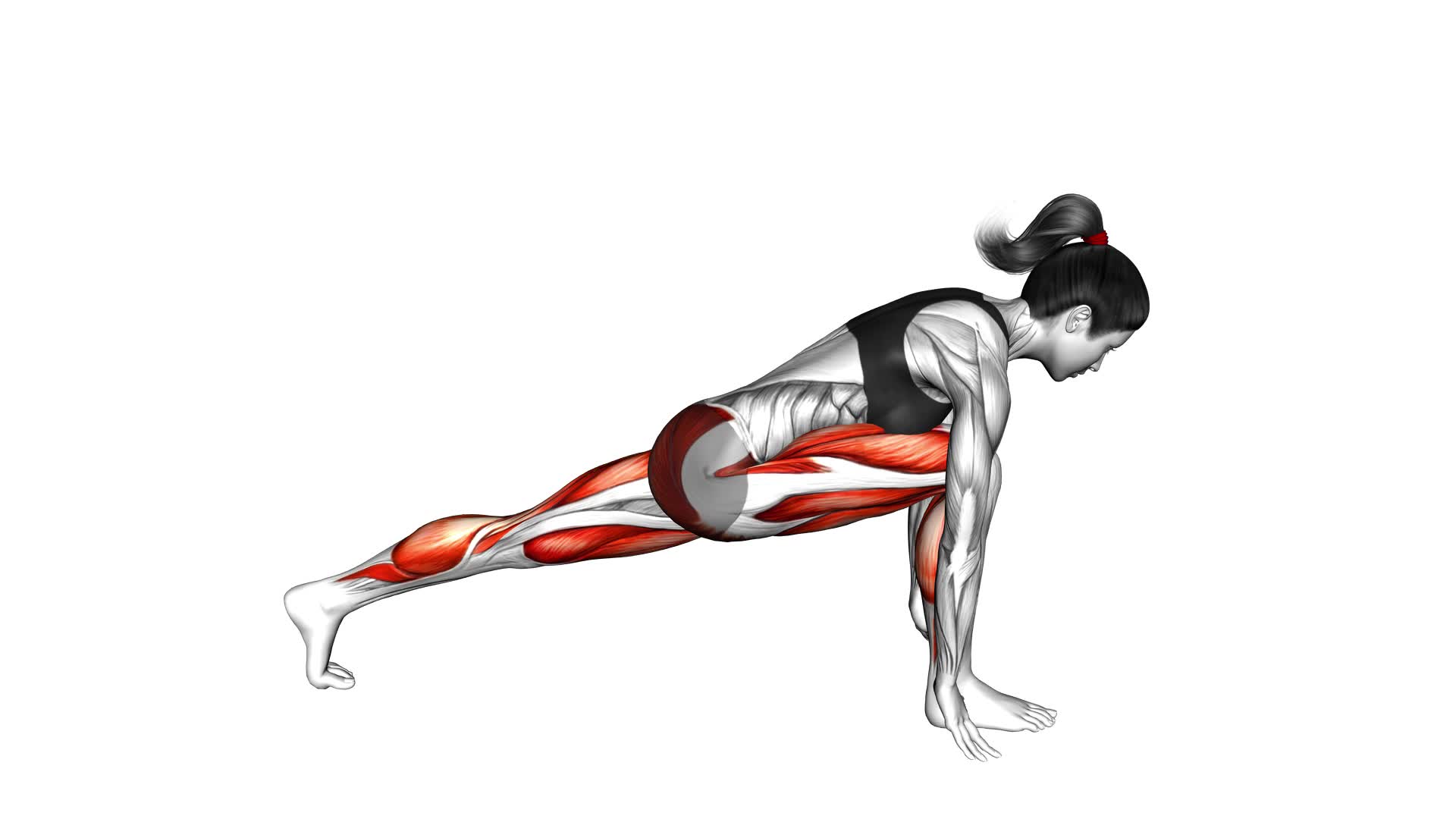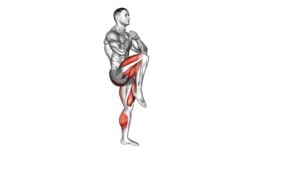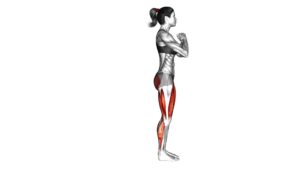High Lunge (female) – Video Exercise Guide & Tips

Are you looking for a challenging exercise that targets your lower body? Look no further than the high lunge!
Watch This Exercise Video
This video exercise guide and tips specifically designed for females will help you master the proper form and alignment, avoid common mistakes, and increase your flexibility.
Whether you're a beginner or advanced, incorporating high lunge into your fitness routine will take your workouts to the next level.
So grab your mat, press play, and get ready to lunge like a pro!
Key Takeaways
- Proper form and alignment in high lunge is important for maximum benefits and injury prevention.
- Foot positioning should be aligned with the heel of the back foot, with the front knee directly above the ankle.
- Hip alignment should be maintained by avoiding tilting forward or backward and lifting the lower hip to align with the higher hip.
- Upper body engagement includes keeping the chest lifted, engaging the core muscles, relaxing the shoulders, extending the arms parallel to each other, and squeezing the shoulder blades together.
Benefits of High Lunge for Females
High Lunge is a powerful yoga pose that offers numerous benefits for women. One of the main advantages is improving balance. As a female, you may find that your balance can sometimes be challenged, especially during certain stages of life like pregnancy or menopause. High Lunge helps to strengthen the muscles in your legs, which in turn improves your stability and balance.
By practicing High Lunge regularly, you can also strengthen your leg muscles. This pose primarily targets the quadriceps, hamstrings, and glutes, giving them a good workout. Strong leg muscles not only help you in your yoga practice but also in daily activities like walking, running, or climbing stairs. Additionally, strengthened leg muscles can contribute to better posture, as they provide a solid foundation for your body.
Incorporating High Lunge into your fitness routine can have numerous benefits for you as a female. From improving balance to strengthening leg muscles, this pose offers a holistic approach to your overall wellness. Remember to practice with proper form and alignment to maximize the benefits and avoid any potential injuries.
Proper Form and Alignment for High Lunge
To perform a high lunge with proper form and alignment, foot positioning is crucial. Make sure to step your front foot forward, aligning it directly under your knee, while keeping your back foot extended and stable.
Additionally, pay attention to your hip alignment by keeping your hips squared and facing forward throughout the exercise.
Lastly, engage your upper body by lifting your chest, rolling your shoulders back, and reaching your arms overhead.
Foot Positioning Importance
Position your feet correctly to ensure proper form and alignment in the high lunge exercise. This step is essential for maximizing the benefits of foot positioning in improving balance during the lunge movement.
Here are five key points to remember:
- Align your front foot with the heel of your back foot, ensuring they're hip-width apart.
- Keep your front knee directly above your ankle to maintain stability and prevent excess strain.
- Distribute your weight evenly between the front and back foot, engaging both legs for balance and strength.
- Press firmly through the ball of your back foot, keeping the heel lifted, to activate the muscles in your lower leg.
- Maintain a strong connection with the ground by grounding the outer edge of your back foot, providing a solid foundation for the lunge.
Hip Alignment Tips
To maintain proper form and alignment in the high lunge exercise, it's important to focus on aligning your hips correctly. Proper hip alignment ensures that you're engaging the correct muscles and maximizing the benefits of the exercise.
One common issue with hip alignment in the high lunge is when the hips are tilted forward or backward. To address this, you can perform hip mobility exercises such as hip circles or hip flexor stretches. These exercises improve the flexibility and range of motion in your hips, allowing for better alignment.
Another common issue is when one hip is higher than the other. To correct this, try engaging your core muscles and consciously lifting the lower hip to align with the higher hip.
Upper Body Engagement Techniques
Engage your upper body by maintaining proper form and alignment in the high lunge exercise. Here are some techniques to strengthen your upper body and activate your core:
- Keep your chest lifted: As you lunge forward, avoid rounding your shoulders and hunching forward. Instead, focus on keeping your chest open and lifted.
- Engage your core: Throughout the exercise, actively engage your abdominal muscles by pulling your belly button in towards your spine. This will help stabilize your torso and support your upper body.
- Relax your shoulders: While maintaining a lifted chest, make sure to keep your shoulders relaxed and away from your ears. Tension in the shoulders can hinder proper form and limit your range of motion.
- Extend your arms: Reach your arms overhead, keeping them parallel to each other. This will engage your upper body and help you maintain balance.
- Squeeze your shoulder blades: As you lunge forward, gently squeeze your shoulder blades together. This will activate your back muscles and improve posture.
Modifications and Variations for High Lunge
To enhance your High Lunge exercise, try incorporating modifications and variations that can challenge and strengthen different muscle groups. The High Lunge is a powerful yoga pose that primarily targets the legs, hips, and core. However, by making a few modifications, you can intensify the exercise and engage additional muscle groups.
One modification you can try is the Crescent Lunge. Start in the traditional High Lunge position with your front knee bent at a 90-degree angle and your back leg straight. Instead of keeping your back foot flat on the ground, lift your heel and come up onto the ball of your foot. This modification increases the stretch in your calf and activates your ankle stabilizers.
Another variation to consider is the Twist Lunge. From the High Lunge position, bring your hands to your heart center. Twist your torso towards the side of your front leg, placing your opposite elbow outside your knee. This variation adds a rotational component, targeting your obliques and improving spinal mobility.
Lastly, for an extra challenge, you can try the High Lunge with a backbend. From the High Lunge position, reach your arms overhead and arch your back, gently bending backward. This variation strengthens your back muscles and opens up your chest and shoulders.
Incorporating these modifications and variations into your High Lunge practice can help you target different muscle groups, improve flexibility, and enhance overall body strength. Remember to listen to your body and modify as needed to suit your individual needs and abilities.
Common Mistakes to Avoid in High Lunge
When performing a high lunge, it's important to pay attention to your knee alignment. Avoid letting your knee collapse inward or extend beyond your toes, as this can strain your joints and increase the risk of injury.
Additionally, be mindful of your weight distribution in the lunge. Make sure to evenly distribute your weight between your front and back legs to maintain stability and prevent unnecessary strain on your muscles.
Knee Alignment in Lunge
You should regularly check the alignment of your knees in the high lunge to avoid common mistakes. Proper knee alignment is crucial for knee stability and preventing knee injuries.
Here are some tips to help you maintain correct knee alignment in the high lunge:
- Make sure your front knee is directly above your ankle, forming a 90-degree angle.
- Keep your knee in line with your second toe to avoid putting unnecessary stress on the joint.
- Engage your quadriceps and glutes to support your knee and maintain stability.
- Avoid letting your front knee collapse inward or outward, as this can strain the ligaments and lead to injury.
- Maintain an even weight distribution between your front and back foot to prevent excessive strain on the knee joint.
Weight Distribution in Lunge
Maintain proper weight distribution between your front and back foot to avoid common mistakes in high lunge.
The key to a successful high lunge is finding the right balance between the two feet. The front foot should bear most of the weight, with about 70% of your weight on that foot. This will help stabilize your body and prevent any unnecessary strain on the back foot.
To achieve this, focus on pressing through the heel of your front foot and keeping your toes grounded. Engage your core and lengthen your spine to maintain a strong and stable posture.
Tips for Increasing Flexibility in High Lunge
To increase your flexibility in high lunge, it's important to consistently incorporate stretching exercises into your routine. Here are some tips to help you improve your flexibility in this pose:
- Perform dynamic warm-up exercises before starting your high lunge practice. This will help prepare your muscles for the movements and increase blood flow to the area.
- Incorporate static stretching techniques into your routine. Hold stretches for at least 30 seconds to allow your muscles to lengthen and relax.
- Focus on stretching the hip flexors, quadriceps, and hamstrings, as these areas tend to be tight in the high lunge position. Try lunging deeper and sinking your hips lower to intensify the stretch.
- Use props such as yoga blocks or straps to assist in your stretching. These tools can help you reach a deeper stretch and maintain proper alignment.
- Consistency is key. Aim to practice high lunge and other flexibility exercises regularly to see improvement over time. Remember to listen to your body and not push yourself too far beyond your limits.
Incorporating High Lunge Into Your Fitness Routine
To include high lunge in your fitness routine, incorporate this dynamic stretch into your warm-up or as a strengthening exercise for your lower body.
High lunge is a versatile pose that can be integrated into your yoga practice or used in variations for strength training.
When incorporating high lunge into your yoga practice, start by stepping one foot forward and lowering your back knee to the ground. Keep your front knee directly above your ankle, and engage your core to maintain stability. As you inhale, raise your arms overhead, lengthening your spine and reaching through your fingertips. Hold the pose for a few breaths, focusing on maintaining balance and stability. To deepen the stretch, you can experiment with different arm positions or add a twist by placing one hand on the ground and rotating your torso.
If you're looking to use high lunge for strength training, you can incorporate variations that target specific muscle groups. For example, you can add dumbbells or a resistance band to increase the challenge and engage your upper body. Another variation is to lift your back knee off the ground, adding an element of balance and stability. This will activate your glutes, quads, and hamstrings even more.
Whether you choose to incorporate high lunge into your yoga practice or use it for strength training, this dynamic stretch will help improve your flexibility, balance, and lower body strength. Remember to listen to your body and modify the pose as needed to avoid any discomfort or injury.
Frequently Asked Questions
How Many Calories Does a High Lunge Workout Burn?
When you perform a high lunge workout, you can expect to burn calories and engage multiple muscles in your body. The exact number of calories burned will depend on factors like your weight and intensity of the workout.
However, high lunge is a dynamic exercise that targets your legs, glutes, and core, making it an effective calorie-burning exercise.
Can High Lunge Help Improve Balance?
High lunge is an effective exercise that can improve stability and strengthen your legs. By regularly practicing high lunges, you can enhance your balance and increase your overall stability.
This exercise targets your leg muscles, particularly your quadriceps, hamstrings, and glutes. It also engages your core, helping to improve your overall balance and coordination.
Incorporating high lunges into your workout routine can be a beneficial way to enhance your balance and strengthen your legs.
Is High Lunge Suitable for Beginners?
High lunge is a great exercise for beginners because it can be modified to suit your fitness level. This pose helps improve balance, strengthens your legs, and stretches your hips and thighs.
How Long Should I Hold the High Lunge Pose?
To get the most out of the high lunge pose, it's important to know how long to hold it. The duration of the pose can vary depending on your fitness level and goals.
Beginners can start with holding the pose for 15-30 seconds and gradually increase the time as they get stronger. For more advanced practitioners, holding the pose for 45-60 seconds can provide a deeper stretch and challenge.
Incorporating high lunge into your workout routine can improve balance, strengthen the legs, and stretch the hip flexors.
Can High Lunge Help With Posture Correction?
High lunge is a great pose for posture correction. By engaging your core and lengthening your spine, it helps align your body properly. To modify the pose, you can use blocks under your hands or lower your back knee for more stability.
High lunge also has benefits for runners, as it strengthens the legs and stretches the hip flexors. Incorporating high lunge into your routine can improve your posture and enhance your running performance.
Conclusion
In conclusion, high lunge is a beneficial exercise for females looking to improve their strength, flexibility, and balance.
By maintaining proper form and alignment, avoiding common mistakes, and incorporating modifications and variations, you can maximize the benefits of this exercise.
Additionally, incorporating high lunge into your fitness routine can help you achieve your fitness goals and enhance your overall physical well-being.
So give it a try and reap the rewards of this powerful exercise.

Author
Years ago, the spark of my life’s passion ignited in my mind the moment I stepped into the local gym for the first time. The inaugural bead of perspiration, the initial endeavor, the very first surge of endorphins, and a sense of pride that washed over me post-workout marked the beginning of my deep-seated interest in strength sports, fitness, and sports nutrition. This very curiosity blossomed rapidly into a profound fascination, propelling me to earn a Master’s degree in Physical Education from the Academy of Physical Education in Krakow, followed by a Sports Manager diploma from the Jagiellonian University. My journey of growth led me to gain more specialized qualifications, such as being a certified personal trainer with a focus on sports dietetics, a lifeguard, and an instructor for wellness and corrective gymnastics. Theoretical knowledge paired seamlessly with practical experience, reinforcing my belief that the transformation of individuals under my guidance was also a reflection of my personal growth. This belief holds true even today. Each day, I strive to push the boundaries and explore new realms. These realms gently elevate me to greater heights. The unique combination of passion for my field and the continuous quest for growth fuels my drive to break new ground.



